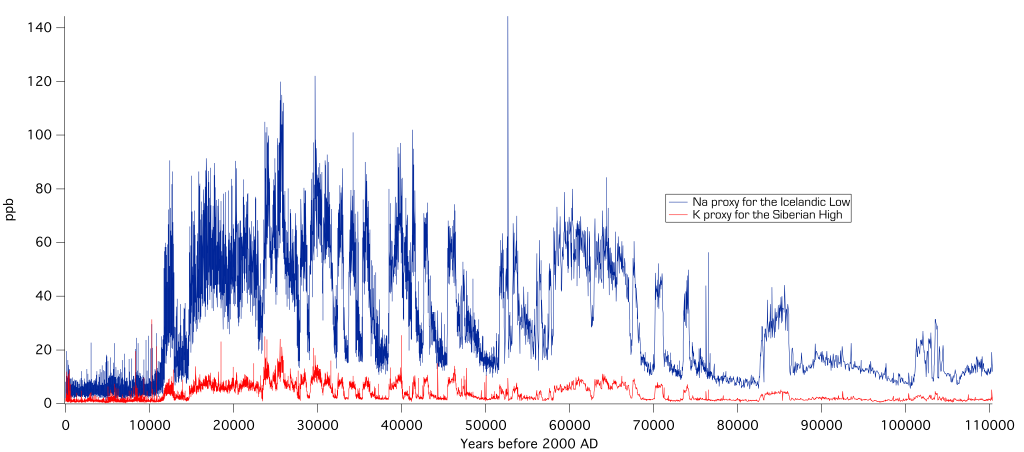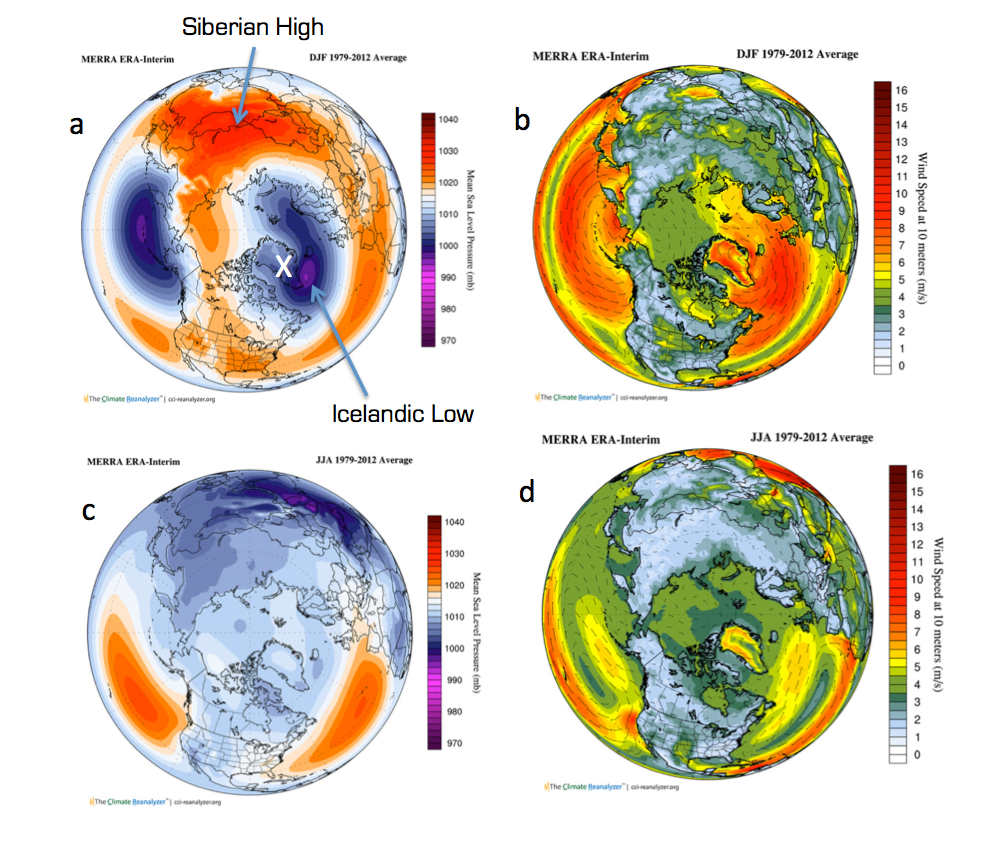|
by Paul Mayewski Global wind patterns are the primary means by which water vapor, heat, and pollutants move from place to place around the planet. We now know that the pathways and strength of these patterns can change rapidly, in a few months or years, and then remain in the new pattern for decades to millennia. When this has happened in the past, they have been proverbial “show-stoppers” for civilizations and ecosystems. We didn’t always know this. Back before the 1990s, when we discovered abrupt climate shifts in the GISP2 ice core from central Greenland, we thought the atmosphere was a slave to the ocean, impotently following its direction. The GISP2 discovery of these abrupt shifts radically changed our view of Earth’s climate and our role in it: from a slow-moving hulk taking thousands of years to make meaningful change, to a manic jack-rabbit, that can respond rapidly to changes like the current dramatic rise in greenhouse gases and CFC-caused destruction of high-altitude ozone. GISP2 profoundly changed our thinking—we discovered that large-scale climate changes could happen in less than a political cycle or a human childhood—and that the ocean wasn’t driving these changes: it was the atmosphere.  Radical and rapid changes in climate and global wind patterns discovered in the GISP2 ice core. The original GISP2 chemistry data was used to understand the behavior of atmospheric circulation over the past 110,000 years, (see here and here) and revealed abrupt changes in the intensity of major atmospheric circulation patterns. Generally, higher sodium, Na, is associated with deeper Icelandic Lows, and higher potassium, K, is associated with stronger Siberian highs; both part of the modern winter pattern Today, there are distinct summer and winter wind patterns for the Arctic. In the winter, there are pronounced low-pressure systems over the North Pacific and in the North Atlantic over southern Greenland and Iceland (Icelandic Low), and a high-pressure system over Siberia (Siberian High). In the summer, these low pressure systems are much reduced, and the Siberian high is replaced with a low pressure system. The Arctic Westerlies are typically much stronger during the winter pattern. One of the things we discovered in the Greenland ice cores (see here and here) is that the length of these seasonal patterns could suddenly increase or decrease by several weeks to a month or more, with the new pattern persisting for decades to thousands of years. We found that in some cases these transitions could occur in as little as one or two years.  Northern Hemisphere wind patterns during winter (top row, DJF for Dec-Jan-Feb) and summer (bottom row, JJA for Jun-Jul-Aug). The left column shows the winter and summer average surface pressures for the period 1979 to 2012, and the right column shows the associated, average wind patterns. For the pressure diagrams, blue colors show low pressure and orange shows high pressure. For the wind diagrams, red show faster winds, green shows slower, and blue slowest. The white “X” marks the location of the GISP2 ice core. Combined ERA and MERRA climate reanalysis data, plotted using Climate Change Institute Climate Reanalyzer™ software. Many of us are familiar with seasonal changes in weather patterns where we live. The weather patterns at our homes are local reflections of these larger patterns. Just imagine then, if suddenly, let’s say over the last few years, there was a shift toward a longer summer pattern–the transport of moisture, heat, and pollutants would be very different in some regions. An example came during the 2013–2014 winter when drought dominated the US West and cold stormy conditions dominated the US East.
Comments are closed.
|
 RSS Feed
RSS Feed